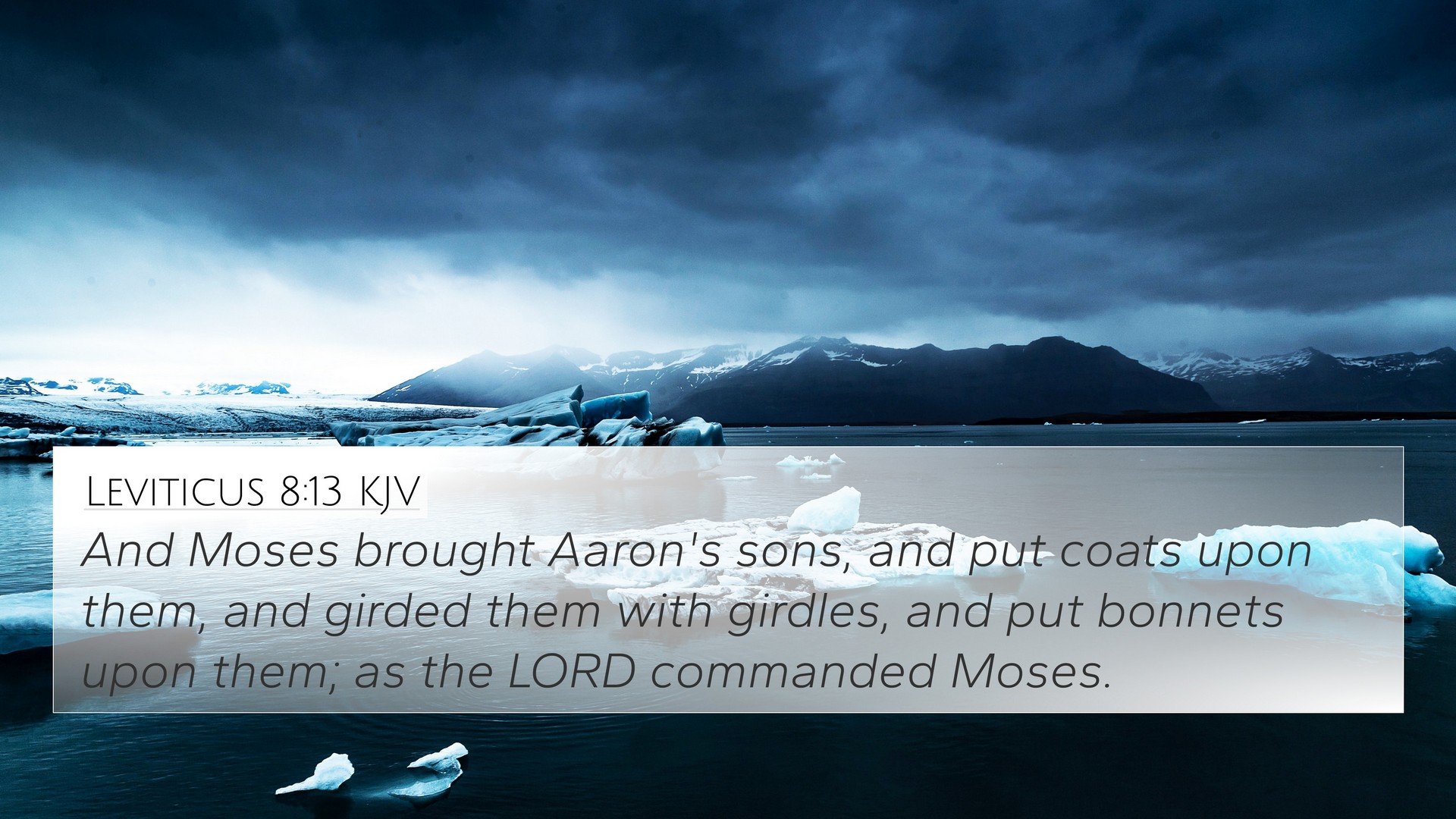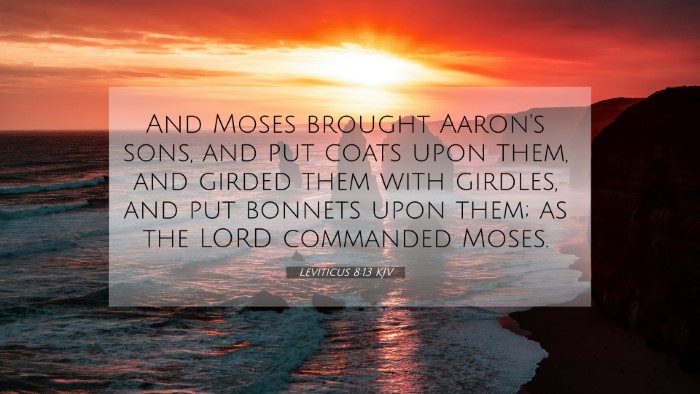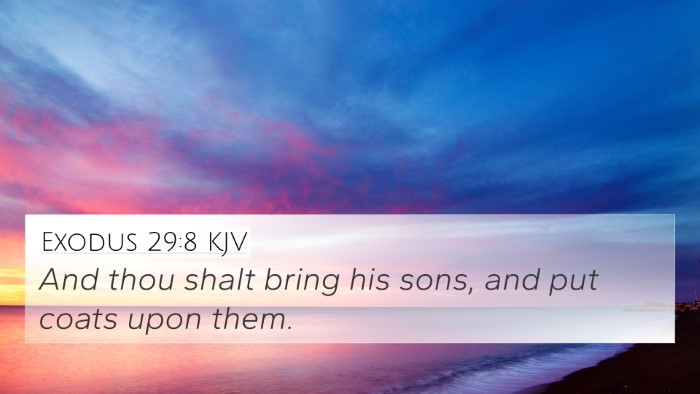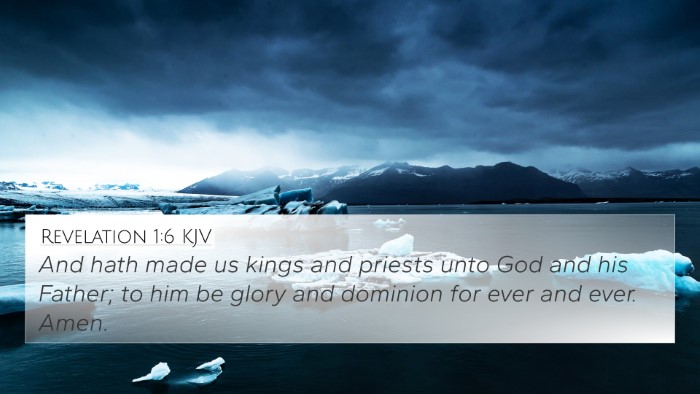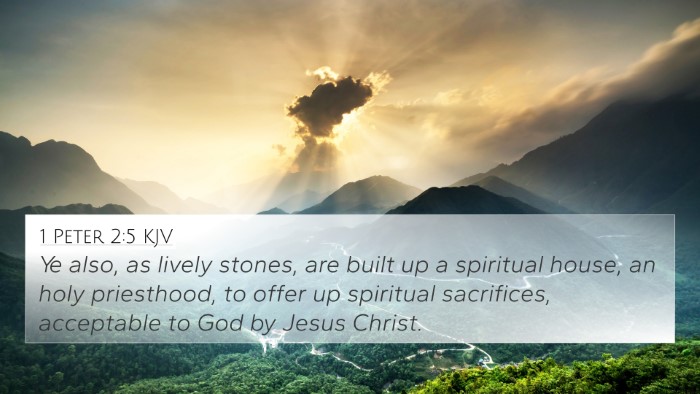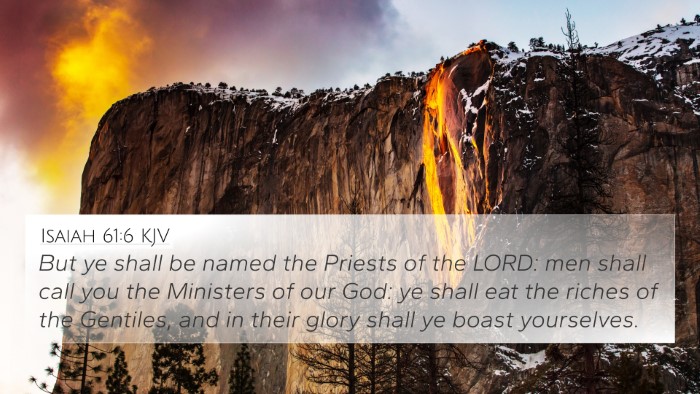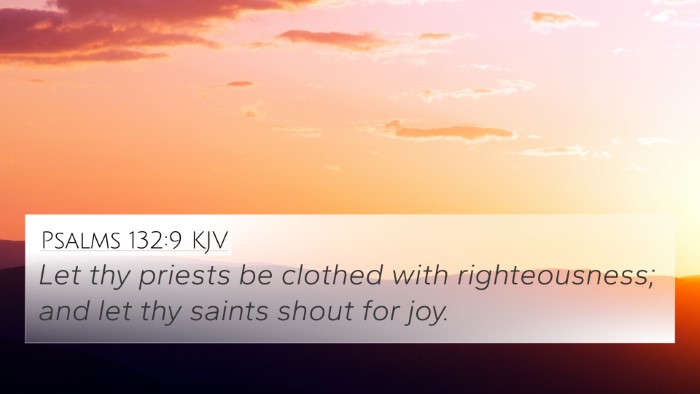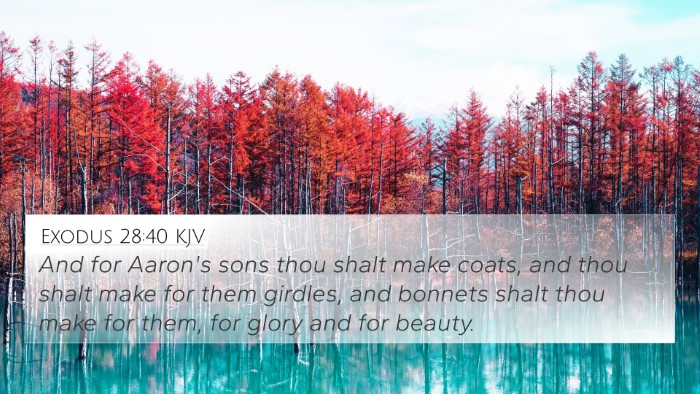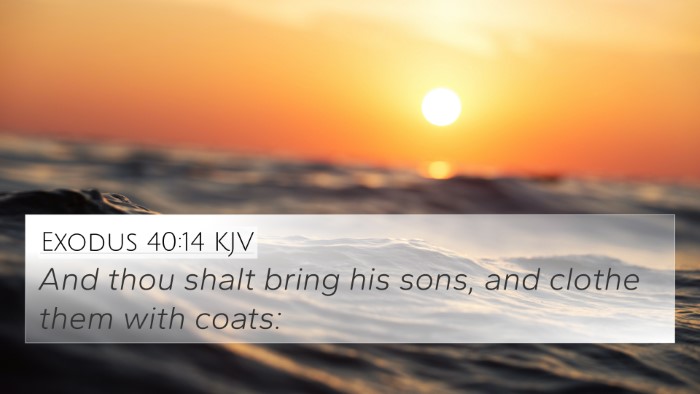Understanding Leviticus 8:13
Leviticus 8:13 states, "And Moses brought Aaron and his sons and put coats on them, and girded them with sashes, and put hats on them, as the Lord commanded Moses." This verse highlights the formal consecration of Aaron and his sons as priests, emphasizing the importance of their attire as a symbol of their divine appointment.
Summary of Key Themes
- Divine Instruction: The attire was not just for show; it was commanded by God, reflecting His holiness and the sacred nature of priestly work.
- Symbol of Position: The garments served as identifiers of Aaron and his sons' roles, setting them apart for service to God.
- Importance of Preparation: Preparation for service includes both physical and spiritual aspects, signifying that one must be ready to serve the Lord in holiness.
Commentary Insights
Matthew Henry's Commentary
Matthew Henry notes that the coats and sashes were symbols of dignity and the responsibilities that come with priesthood. They were to “make a distinction between the holy and the profane,” serving both to encourage reverence towards God and to remind the priests of their sacred duty.
Albert Barnes' Commentary
Albert Barnes emphasizes that the ceremonial clothing represented the majesty and glory of the priest's office. He points out that these garments were richly designed and catered to convey the holiness associated with God's service and the necessity of being spiritually prepared to minister before the Lord.
Adam Clarke's Commentary
Adam Clarke elaborates on the significance of Moses performing these actions, as it illustrates the transference of authority from Moses, God's chosen leader, to Aaron, who is appointed as the priest. Clarke highlights that the garments reflect the seriousness of their role and the holiness required for serving in the presence of God.
Cross-References
Understanding Leviticus 8:13 within a larger biblical context opens the door to thematic connections throughout scripture. Below are some significant cross-references related to this verse:
- Exodus 28:2-3: Discusses the making of priestly garments as a way of glorifying God.
- Exodus 40:12-15: Describes the consecration of Aaron and his sons, establishing them in their roles.
- Leviticus 10:6-7: Highlights the need for reverence and adherence to God's commandments among priests.
- Hebrews 5:4: Explains the divine appointment of high priests, linking to the significance of Aaron's garments.
- 1 Peter 2:9: Relates to the concept of believers being a royal priesthood, echoing the themes in Leviticus.
- Isaiah 61:10: Speaks of garments of salvation, further emphasizing the significance of spiritual attire.
- Romans 12:1: Calls believers to present themselves as living sacrifices, akin to the priests' dedication to God.
Connections and Themes
The examination of Leviticus 8:13 through cross-referencing Bible texts illustrates some profound connections:
- There is a strong link between the Old Testament priesthood and the New Testament depiction of Christ as our High Priest.
- Thematic parallels can be drawn between the preparation and sanctification of Aaron and the spiritual preparation required of believers today.
- Links between the prophetic call for holiness in the Old Testament and the New Testament’s encouragement for believers to live consecrated lives can be highlighted.
Tools and Methods for Cross-Referencing
Engaging in a comprehensive Bible study can help identify various connections and theological implications of scripture. Some useful tools for cross-referencing include:
- Bible Concordance: A resource that lists words and their corresponding verses to aid in deeper study.
- Bible Cross-Reference Guide: Provides thematic references to correlate verses across the Bible.
- Cross-Reference Bible Study Methods: Techniques for examining multiple passages that share themes or principles.
Conclusion
Leviticus 8:13 serves not only to document the formal consecration of the priests but also to illustrate the broader theme of God’s holiness and the necessity of a prepared heart for service. Through cross-referencing, deeper insights are gained, enhancing our understanding of God’s covenant and the ongoing relevancy of Biblical principles in the life of believers today.
